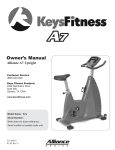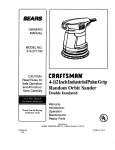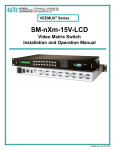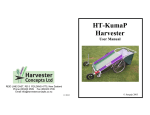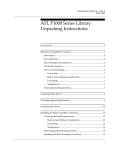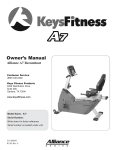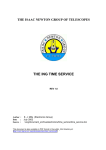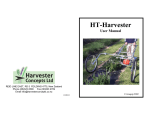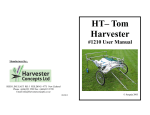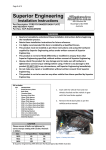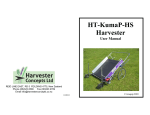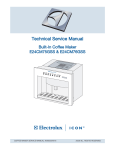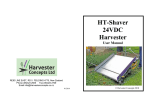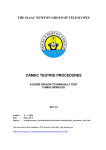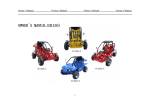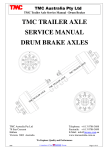Download "user manual"
Transcript
HT-Shaver BD Harvester User Manual REID LINE EAST, RD 5 FEILDING 4775, New Zealand Phone (06)323 2509 Fax (06)323 2709 Email [email protected] 01/2014 © Harvester Concepts 2012 HT-Shaver BD Harvester Introduction Congratulations on the purchase of your Harvester Concepts Ltd HT—Shaver Harvester. This machine is of high quality and will reward you with reduced effort and greater efficiency in your harvesting. Learning to operate your HT—Shaver won't take long. You will soon find it to be an invaluable tool. Important Safety Note Read and understand all the instructions before using the HT-Shaver The HT– Shaver should only be used for the purposes for which it was designed. Use it for no other purpose (e.g. it is not a grader blade or battering ram!). We have manufactured the HT-Shaver using quality materials and manufacturing techniques however if faults do occur please have them corrected before you use it. Please read the Power Head instruction book before use. Pay particular attention to running in and safety notes. Please read this instruction book before use and retain it for future reference. It requires only one person to operate the HT-Shaver - keep all others away! Immediately after turning the power head off, fit the cutter bar cover. It should be removed last, before restarting the power head. 20 1 Index Page 1 2 3 4 5 Introduction / Safety notes Index / Specifications Conditions of sale and guarantee Your HT-Shaver Harvester Consists Of Uses of the HT-Shaver Assembly 6 Height Adjustment 7 Dismantling 8 Start up 9 Fault finding 10 Maintenance 12 Preventative Maintenance / Freighting 13 Options 14-17 Parts Diagram/Parts List Specifications Cutting height above bed: 10 to 80mm Cut width:- 1200mm Weight, dry:- 42 Kg Wheel track:- 1415mm centre lines Dimensions:Ready to use:- width 1600mm Length 2330mm For Freighting:- On pallet Approx 80 Kg (inside 1750x1600x600) approx 2m³ Overall Specifications subject to change without notice 2 19 Conditions of Sale and Guarantee Your HARVESTER CONCEPTS LTD product is guaranteed to be free from defects in materials and/or workmanship under normal use and service for a period of 6 months from date of initial purchase. HARVESTER CONCEPTS LTD’S liability and obligation is limited to problems which HARVESTER CONCEPTS LTD acknowledges to be defective under the guarantee conditions either to - the free replacement or repair (where practicable) at the HARVESTER CONCEPTS LTD premises of any parts returned within the guarantee period - or shipment of replacement parts to the customer, as mutually agreed to. Supply of non standard parts or services from other than HARVESTER CONCEPTS LTD are not covered under the guarantee conditions unless prearranged, in writing, with HARVESTER CONCEPTS LTD . Shipment of product to HARVESTER CONCEPTS LTD is the consumers responsibility and cost Guarantee conditions are void for any of the following reasons:Abnormal use of the product Accident damage or vandalism Modifications or unauthorised repairs to the product or its components Where component "seconds" have been supplied Normal wear and tear HARVESTER CONCEPTS LTD cannot be held liable for any damage caused to people or other property during use of the product or as a result of any defect or malfunction of product or components supplied by HARVESTER CONCEPTS LTD. Use of the product is solely the users responsibility. Other losses such as delays in work, incorrect or misleading information, omissions and errors, HARVESTER CONCEPTS LTD is not liable for. This guarantee is expressed in lieu of all other guarantees expressed or implied and all other obligations and liabilities on HARVESTER CONCEPTS LTD's part and specifically excluding consequential damage. HARVESTER CONCEPTS LTD makes no guarantee of merchantability or fitness for purpose and is not responsible to any purchaser of its products for any undertaking, representation or guarantee, except those stated in these terms, made by any person, dealer or body corporate selling or dealing with its products in any manner whatsoever. 18 3 23 24 25 26 27 28 29 30 31 32 33 34 35 36 37 38 39 40 41 42 43 44 45 50 51 52 4 Safety Bar 4 HT-SH-Cables -SS 1 2 1 2 2 2 6002LLU HT-SH-ED020 HK4012 2 Handle Bar HT-SH-ED032A Handlebar frame (c/w 4 x bolts and washers) Safety bar (mounted) Conveyor and cutting head assembly Two wheel assemblies c/w mount legs HT– Shaver-BD instruction book Power Head instruction book and spanners Set, oil change equipment Optional Bins (Recrate 47 or 75) Self propelled 24VDC powered / self propelled g Housing front Drive Plate Spacer 25x15x6.05 Bearing Spacer 22x15x2 Gear, Intermediate 76T Gear, Driven 70T Key 4 mmx25 Output shaft Key 4mm x20 Eccentric Bearing Block Bearing Needle roller SHCS M6 x 20 CSK Collar CHCS M8x35 ZP Cover Blade extension Bottom Blade Extension Top SHCS CSK ZP M6 x 16 Dowel 10 dia x 45 Wear Strip, upper Wear strip, lower Throttle cable Safety Switch Conveyor belt Your HT-Shaver Harvester Consists Of:- 17 Washers Koma Nut, M6 conelock Backing strip Mounting bolts Description Engine GX25 Driveshaft Assy Driveshaft inner Worm Drive gearbox Bell Housing Nut M10x1.25, thin Clutch Drum Housing Rear Bearing Input Gear 17T Spacer 19x10x3 shouldered Spacer 19x10x6 SHCS M6 x25 SHCS M6x20 Blade Lower Blade Upper Mounting Bolts/Nuts Bolts Blade:SHCS button head M6x20 qty 1 M6x16 qty 11 The HT-Shaver BD (Bottom Drive) is designed for cutting close to the ground. It’s ground following roller allows accurate height adjustment. There are other specific models for flat or raised beds, manual or self propelled. There is also an all electric model, 24VDC, for use in tunnel houses. Uses include: Herb Harvesting. the HT will ride on the row to be harvested, cutting the crop to a uniform height and placing the trimmings in the collection bins General Trimming. Pruning crops to a low height Clean Up. Cutting and collecting up surplus or old crops before reusing the seed beds Assembly 2 10 10 10 4 6 3 Qty 1 1 1 Unpack the harvester ensuring HT-SH-ED012 0-096-206 0-133-205 6000LLU Part No. GX25 16 18 19 20 21 22 Item No. 1 2 3 4 4a 5 6 7 8 9 10 11 12 13 14 15 16 17 HT-Shaver-BD Parts List Uses of the HT—Shaver you receive all the parts and that they have not been damaged in transit. Layout the components on the ground in their rough position. The wheels may already be fitted to the mounting legs, as shown on page 7 set cutting height to maximum. Lift rear of harvester and insert each wheel / leg assembly into its retainer. Insert retainer pin for required conveyor / bin height Fit the handlebars: Fit the rear bolts first then select handle bar height, align relevant holes and insert front bolts Adjust your force on the handlebars to make screwing in the bolts easier. Fit collection bins—they slide / drop into the holders. 5 37 42 23 24 44 41 2/.Adjust handlebars for operator comfort; slacken rear 2 bolts, undo front 2 bolts and reposition handlebars. Reinsert front 2 bolts and tighten all bolts. 40 29 39 30 26 32 Adjusting bolt 34 31 1/.Ensure the wheels are set at the correct height so the bins clear any cut crop. Supporting the harvester weight, remove wheel mount lock pin, raise lower harvester to correct height and reinsert lock pin. Repeat for other wheel. 38 33 35 7 This is easiest done on a flat surface but can be done in the field. 36 6 Height Adjustment 45 3/. Cut height adjustment: There is an adjuster on each side of the harvester. Remove lock pin on each side of harvester, far side first, engine side last (as it is the heaviest). Brace the harvester from moving back or forwards and move the big lever to obtain the correct cut height 15 20 6 15 15 22 21 Dismantling is in reverse of assembly. 3 43 4a 9 Low cut height 10 Lock pin 28 8 High Cut Height 1. The power head should be refuelled and started in accordance with the manufacturers handbook. Note: Especially during running in , vary the throttle setting - don’t rev continuously. Also note oil change requirement. 2. With the machine adjusted ready for harvesting, remove the cutter bar cover. 3. Ensure safety bar is in forward position and the engine stop switch is on before attempting to start the engine. NOTE:- If the safety bar is moved rearward it will operate the switch and stop the engine and cutter bar. 4. The engine must be stopped and the cutter bar cover fitted before any 15 13 12 25 11 8 27 Start Up 19 14 7 18 14 14 17 16 14 4 HT-Shaver-BD Parts List 8 2 5 1 Adjusting lever; To cut lower 5. Let the engine warm up for a minute. Use the throttle control to rev the engine up. As the engine is revved up the conveyor and cutter bar will start. To stop the conveyor and cutter bar, throttle the engine back with the throttle lever. The engine stop switch is adjacent to the throttle. The Safety Bar switch will also stop the engine if activated Fault Finding Engine will not start Stop - Refer to manufacturers handbook Go Ignition switch Throttle in idle position adjustments are done. CAUTION: Do not approach the front of the machine with the engine running. Always switch it off and fit the cutter bar cover. Options Field Harvest Wheels These smaller wheels are used when a solid field of crop needs harvesting—there are no rows for the wheels to travel down. The larger wheel axles are unbolted from the mounting legs and the smaller wheels / axles are fitted to them. When offering the wheel assemblies up to the main harvester frame, ensure the wheels are positioned underneath the harvester. This positions the wheels behind the cutter bar so they do not protrude onto un cut crop. Large wheels should be used wherever possible as they travel over rough ground better. If required the left hand wheel can be a large one, positioned behind the engine and the right hand wheel can be a small one fitted under the harvester. Check ignition switch is on and safety bar is in forward position Fuel in tank? Correct use of choke? Primed Carburettor? Fouled spark plug? Conveyor not driving correctly Engine revving up? Conveyor belt too tight. It should only be tight enough to grip on the drive roller without slipping. Remember that there is a belt tensioner on each side of the machine. Both tensioner bolts must be adjusted evenly. To adjust— release lock nut / bolts and adjust tension bolt accordingly. Retighten lock nuts and lock bolts. 8 13 Conveyor belt loads up / doesn’t track correctly—it moves to one side. The belts can move to one side, load up or become stressed if not tensioned correctly Annually Remove cutter blades: remove front of gearbox. Use an allen key in the central bolt to rotate / move blades so you can remove each attachment bolt (4). Next remove blade mounting bolts (10). Replace “Kuma” blade bushes as required. Coat blade mating surfaces with food grade grease and refit. Ensure to adjust bolt tension as shown on page 10 Remove flexible drive inner cable, wipe clean, grease and reinstall ensuring full engagement into drive shafts and retaining bolts fit into cable retaining holes. If you require further assistance or spare parts, please call Harvester Concepts Ltd Maintenance Daily At every refuel give each of the gearboxes 5 grease nipples 1 Belt tension bolt pump each from a grease gun (use food grade grease). Lock nut / bolts The cutter bar should be lubricated with a food compatible lubricant whenever refuelling and before storing. Apply a little grease into each hole on top of the cutter bar—this is blade position sensitive so ensure grease is not passing straight through and onto the ground Food grade lubricants can be applied to hinge points, sliding areas etcetera. Wash down the HT-Shaver harvester after use. Only wash enough to remove dirt. Over washing could induce corrosion and reduce the conveyor belt life. Sealed bearings are utilised but water under pressure could penetrate them. Freighting Freighting on the back of a utility vehicle is preferred. The HT-Shaver is very light and if transporting on a trailer it is not heavy enough by itself to make the trailer springs work i.e. it will get badly shaken about. On rough road / tracks this could cause structural damage. One solution is to put an extra weight on the trailer as well as the harvester so the springs actually work! uneven belt tension. Belt will always move towards the tight side—tighten it up (see above). Build up of material on rollers. The conveyor belt may have to be slackened or removed totally to remove any foreign material. See the maintenance section. Weekly Check the cutter blades for looseness. If necessary adjust as follows. Loosen nut (1) 12 Tighten screw (2) and turn back 1/2-3/4 turn 9 50 Hour Tighten nut (1) Lubricate blades, start engine and run blades for 1 minute at full speed. Stop the engine and carefully touch each bolt (2) in turn. If temperature moderate, clearance is good; too hot to touch - readjust turning (2) back a little and retest. Apply a drop of oil to the throttle cable adjacent to the carburettor Sharpen the cutter bar if required. Always file in the direction of the cutting edge (and lift file off blade to return to start position). Remove as little material as possible. After all filing is complete, remove burrs from the edge of the blade with a slip stone. Grease Nipples (5) Drain and replace engine oil; Remove engine oil dipstick and fit extension tube and drain container supplied. With assistance tip the harvester up onto it’s RH side ensuring the container is under the extension tube until all oil has drained out of the engine. Remove drain container and lower harvester back onto its wheels. Refill with 90cc of correct grade engine oil. Place drain container on the ground below the filler point. Remove extension tube, check oil level is correct Gap and refit dip stick. Apply dry lubricant / oil to all sliding areas To clear contamination from around conveyor rollers you need to: Slacken the drive chain tension. Slacken the conveyor belt. This is done at the 2 adjusters at the top end of the conveyor. Note their original setting so you can adjust back to this later. Slacken belt tensioners and remove belt (remove safety bar, right hand wheel assembly, RH conveyor fence and slide belt off RH side). Reassembly is the reverse procedure. Check conveyor belt alignment is correct. The gap on each side should be even. See page 9 for adjusting procedure. 10 Dip Stick Preventative Maintenance You will become reliant on the harvester to do its job and if a breakdown was to occur you could find yourself in an awkward predicament. We recommend regular maintenance to help avoid breakdowns. 11












